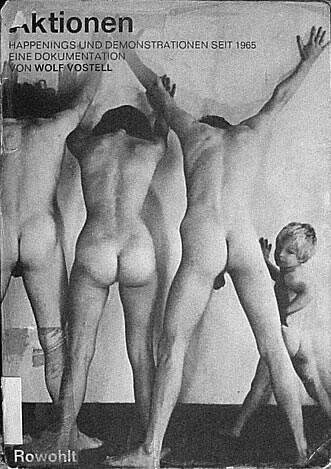Rather than signaling the end of the labor regime that has marked the past decades, the current crisis is the becoming-explicit of its internal contradictions. As the Constructivist critic Nikolai Tarabukin put it: the future art under communism would be work transformed.1From the 1970s on, this goal has increasingly been realized in unexpected ways, as new forms of labor have emerged that redefine work in performative terms. In recasting performance as action, the current activism not so much negates as modulatesthe by now quite aged “new labor.”
1. New Labor
The term “performance” is slippery even within relatively well-defined contexts. In today’s economy, it not only refers to the productivity of one’s labor but also to one’s actual, quasi-theatrical self-presentation, one’s self-performance in an economy where work has become more dependent on immaterial factors. As an artist or writer or curator, you perform when you do your job, but your job also includes giving talks, going to openings, being in the right place at the right time. Transcending the limits of the specific domain of performance art, then, is what I would call general performance as the basis of the new labor. The emergence of new forms of performance in art in the 1960s was itself a factor in the emergence of this contemporary form of labor, which is, after all, connected to a culturalization of the economy. Some artistic practices from the 1960s and beyond can, as both exemplary and eccentric manifestations of the new regime, help to bring it into focus.
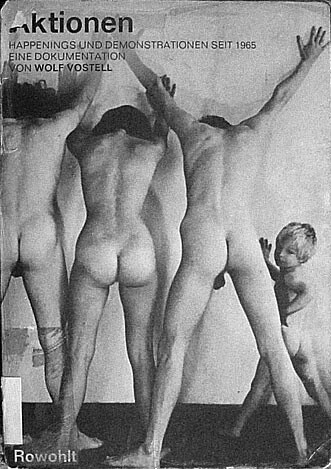

The work of John Cage and its reception by a young generation of artists around 1960 signaled a generalization of artistic performance. In the early versions of the score for Cage’s 4’33’’, which was written in different notational systems, the piece was presented as being “for any instrument or combination of instruments,” though the piano version would be the dominant one. The version in proportional notation consists of vertical lines indicating duration—pure time. Here one may wonder why there has to be “any instrument” at all, and in 1962 Cage radicalized the piece as 0’00’’, also known as 4’33’’ no. 2: this was now a “solo to be performed in any way by anyone,” consisting of the performance of “a disciplined action.” The written score clarifies: “No two performances to be of the same action, nor may that action be the performance of a ‘musical’ composition.”2 This score, it has been noted, can be seen as Cage’s response to the development of a new kind of performance by a young generation of artists associated with Fluxus and happenings—indeed, Cage’s score is dedicated to Yoko Ono and her then-husband Toshi Ichoyangi.3This performance was generic in that it did not fit any disciplinary categories; it was also potentially general, no longer containable in traditional artistic frameworks.
If the 1960s were marked by a prolonged critique of medium-specificity and by the emergence of generic visual art, there were various routes to the post-specific. One, traced expertly by Thierry de Duve, centered around the modernist painting, which when reduced to a bare canvas, to its physical medium, turned into an “arbitrary object” among others.4 This, the triumph of the readymade at the heart of modernism, was the development that Greenberg and Fried desperately tried to stave off in the 1960s. By contrast, the impact of Cage—which the young artists, especially Kaprow, hybridized with their interpretation of “action painting”—placed the emphasis on performance as a form of intermedia.5 Various strands, both Cagean and more expressionist-actionist, intersected and become pop phenomena, thus enacting the transition from the artistic-generic to the general—from Yoko and John’s relationship performance, to Joseph Beuys’s media messianism, Wim T. Schippers’s Dutch Fluxus TV comedy shows, and the German Kommune 1, cofounded by sometime Situationist Dieter Kunzelmann,— which made it into many magazines and onto the cover of Wolf Vostell’s 1970 anthology of Aktionen.


The new performance thus quickly outgrew the confines of rarefied avant-garde art events; generic performance became truly general performance. Last year, former Kommune 1 protagonist Rainer Langhans did a much-publicized stint on the German version of I’m a Celebrity, Get Me Out of Here.6 But one should not interpret such genealogies in the rather tired terms of co-optation. General performance in art cannot be separated from the wider transformation of work in terms of performance. This means that, yes, there will be cases that seem tailor-made for Peter Bürger-style complaints; nonetheless, this implication of aesthetic general performance in the establishment of a regime of economic general performance is not a fatal flaw but a precondition for whatever critical potential the former may have. Aesthetic general performance is a faulty prototype, a demonstration model with whims.
One important manner in which the transition to post-Fordism was theorized in the 1960s was through the discourse of automation and play. Constant, for one, emphasized that automation would make human labor increasingly unnecessary, leading to new forms of occupation, of life as play. Huizinga’s homo ludens, whom industrial capitalism had relegated to the past, would become a reality once more.7 In 1966, a life-size “test space” for Constant’s New Babylon was constructed in Rotterdam. Entitled Ambiance de jeu, it contained rooms that included a crawl space, a “sonorium,” a large metal scaffolding, a labyrinth of doors (an idea adapted from the Situationist labyrinth planned for the Stedelijk Museum in 1959, which was never realized), and an “odoratorium.” Because Constant and his team were anxious for feedback from visitors, they provided a wall on which comments could be scrawled as well as a table with questionnaires and phones that could tape spoken comments. In this rather technocratic setup, play is a matter of planning. When, in 1973, Constant looked back on this experiment, he stressed the need for giving the out-of-work subject of the future something to do, and this something could only be the exploration of a dynamic, perpetually changing environment.8
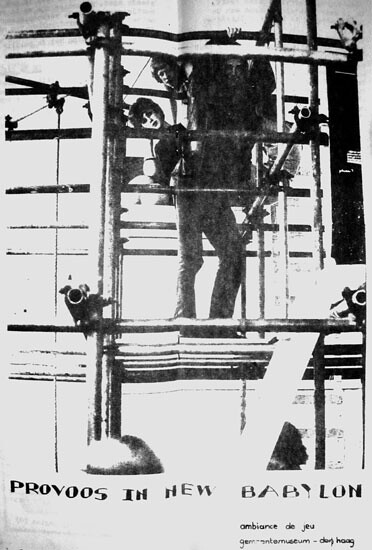

Constant considered the young Provos shaking up Dutch society in the 1960s to be the precursors of tomorrow’s New Babylonians.9 The Provo movement presented itself as a playful multitude, as the “provotariat.” Constant and his homo ludens were crucial points of reference in Provo’s magazine; one issue had a photo showing “Provos in New Babylon,” young people climbing on the metal scaffolding of Constant’s Ambiance de jeu.10 Provo was a coalition between a small anarchist group centered around Roel van Duyn, and the one-man movement Robert Jasper Grootveld, whose anti-smoking happenings had galvanized Amsterdam’s disaffected youth. Grootveld, who waged war on tobacco and addiction and appropriated what he knew about American happenings to stage absurd rituals in public space, constructed a personal mythology in an inimitable (and virtually untranslatable) discourse.11 A self-proclaimed exhibitionist, Grootveld early on engineered the confluence of the avant-garde and the mass media, becoming a celebrity self-performer—although his happenings of 1964-67 generated a kind of publicity that was not easily normalized.12
A central feature of Grootveld’s private mythology was his semi-secular saint, Saint Nicholas or Sinterklaas—Klaas for short.13 “Klaas must come,” Grootveld maintained prophetically. The coming of Klaas, that central mytheme of Grootveld’s 1960s discourse, was given an economic slant in the Klaasbank, a semi-fictitious bank whose motto was that “Klaas Must Pay Some Day.”14 Absorbing Constant’s idealistic take on the abolition of work through automation, but linking it to an analysis of financial collapse, the Great Depression, and inflation (a phenomenon he witnessed firsthand during a trip to Italy in 1966, when the idea for the Klaasbank was born), Grootveld proposed a bank that would allow the continuing production and consumption of goods once unemployment was the dominant form of life; a bank with a new kind of currency.15
If the latter remained vague and hypothetical, the phrase “Klaas Must Pay Some Day” reads as a canny take on the progressive financialization of post-industrial capitalism, on the financial abyss underlying the new labor. Like more recent alternative banks, the Klaasbank may not have worked, but it functioned as a symptomatic indicator of profound shifts. The Klaasbank was still marked by the ideology of growth; it sought to safeguard growth by providing ludic self-performers with dodgy credit. Today, the collapse of a real credit-based economy sees performers scrambling to find sustainable modes of practice, of life—seeking to bank on time in a different way than the economy of futures.


2. Economy of Time
The Marxist analysis of the production of surplus value was rooted in discrete and quantifiable time; different types of labor requiring different levels of skill or physical hardship are paid accordingly, but all on the basis of regular, measurable working hours. When labor becomes general performance, time-as-measure erodes; “flexible working hours” means that all hours are potentially working hours, and every encounter potentially becomes a form of networking and hence self-performance. In a curious way, the recent interest in time-banking tends to restore time as the measure of value. Early-twentieth-century examples of time-banking, which are invoked as models for contemporary forms, are in turn indebted to the Equitable Labor Exchange developed in the 1830s by Robert Owen, and to Marx and Engels’s insistence on the abolition of money under communism, when socialized production would enable the direct expression of value in its “natural, adequate, and absolute measure, time.”16
While the introduction of time-based currencies in time-banks erases the difference between actual working hours and paid working hours that produces surplus value in industrial capitalism (you work for ten hours but get paid for nine), by making time into a currency, Owen, Marx, and contemporary time-bankers replicate a crucial feature of industrial capitalism. The time-bank is not the end of money but its primitivist rebirth. However, the e-flux time/bank, as a time-bank for cultural workers, reflects a crucial change: the postings, to the extent that they are more than advertising for the self-employed unemployed, are so diverse and individual as to make comparison extremely difficult. We have come a long way since Owen’s Equitable Labor Exchange; in the post-Fordist regime, fixed capital (technology) cooperates with surplus-value adding “immaterial labor” to destroy the status of abstracted labor (labor power and labor time) as the measure and source of wealth, without destroying capitalism in the process. As the production of value becomes ever less transparent—since it is no longer anchored in labor time—value is up for grabs. Abandoning labor time as the source of value means that labor itself changes. While repetitive industrial labor is to a large extent farmed out to low-wage countries (or migrants from low-wage countries), “immaterial” laborers in advanced economies are no longer exclusively or primarily seen as purveyors of abstract labor power, but as people who bring something unique to the process. General performance is labor beyond measure; it is the qualitative performance of time rather than its quantitative use.17 In practice this means high incomes for the few and precarity for the many.
At a moment when various European countries have abandoned the desperate ploy of the last two decades to integrate art into a “creative industry” that would be able to replace industries that have gone east, imposing drastic cutbacks that are designed to widen the gap between successful “high performers” and the rest, this attempt at a partial restoration of time-as-measure is at the very least suggestive. However, it is highly problematic, as Stroom in The Hague has done, to burden time-banks with grand claims about alternative economies and mutual aid in a time of crisis.18 Such economies and such aid exist, in informal ways, and it is hard to see what is gained by formalizing them—unless it is the use of the time-bank listings for purposes of, precisely, self-performance. In spite of or because of its problematic aspects, time-banking is part of a constellation of developments that sheds light on the pressing antinomies of our temporal economy.
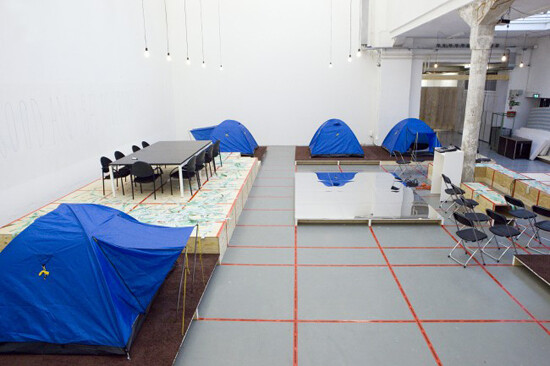

Another element of this constellation is formed by what I would call time-camps. In the case of the project Allegories of Good and Bad Government by Hans van Houwelingen and Jonas Staal at W139, artists and politicians were literally camping in the space for a number of days, debating all day long and withdrawing into their tents at night—a set-up designed to recall Big Brother houses and televisual “jungle camps.” Sung Hwan Kim’s quasi-secret two-week workshop, in association with Casco in Utrecht, in an Amsterdam apartment in June 2011, is another extreme case. Since what Franco Berardi calls contemporary “cybertime” is marked by our feelings of insufficiency about never having enough of the damn thing (time) to accomplish all the things we should, it is acutely stressful, but being inside such distended events brings with it an odd sense of calm.19 Here one is part of swarm of similar subjectivities, and at some point the pressure to perform may ebb and new forms of cooperation may emerge. There are additional examples that could and should be analyzed in more detail; here I just want to compare the time-camp as such with the recent interest in time-banks. In different ways, they both seek to counter the “eventalization” that is part and parcel of the prevailing economic regime. But of course neither time-banks nor time-camps are abstract negations of the current economy; they too bear its mark. They are part of a set of sometimes conflicting attempts to think and act within but also against and beyond the current working conditions.
Fittingly, the tent camp in W139 was succeeded by a tent camp associated with the Occupy movement that was set up on the adjacent Beursplein, next to the Amsterdam stock exchange—with Jonas Staal among the participants. Because the international crisis has manifested itself (for the time being) only in a mitigated form in the Netherlands, the Dutch Occupy movement did not take off. Yet a case such as the “Reading at Occupy Amsterdam Group,” with collective reading and discussion sessions held in a tent, is significant: such reading groups have proliferated, both within and outside institutional contexts (or in their margins). They too are small time-camps, zones of intensity; and in the absence of any great mass movement, the small “Occupy Amsterdam” encampment became visible as a radicalized time-camp, as an occupation less of a small square than of hours, days, weeks, and months. In contrast to time-camps within art institutions, here the occupation of time exceeds the boundaries of the culturalized economy.
In this sense, such an encampment almost seems made to illustrate Berardi’s point—a familiar one, but well-made—that
the development of productive forces, as a global network of cognitive labor that Marx called the “general intellect,” has provoked an enormous increase in the productive potency of labor. This potency can no longer be semiotized, organized, and contained by the social form of capitalism. Capitalism is no longer able to semiotize and organize the social potency of cognitive productivity, because value can no longer be defined in terms of average necessary work time. Therefore, the old forms of private property and salaried labor are no longer able to semiotize and organize the deterritorialized nature of capital and social labor.20
As a kind of reverse co-optation, a number of contemporary practices take performance beyond the limits of “actually existing” general performance. However, this development should not be seen in beatific terms. The liberated potency of general performance is a destructive as well as constructive force.


3. Performance into Action
Adorno criticized Huzinga’s Homo Ludens for failing to acknowledge that the repetitive element in play is an afterimage of unfree labor.21 Provo too inadvertently presented afterimages of bondage. The taunting “checks” made out by the Klaasbank to Provo’s nemesis, Amsterdam mayor Van Hall, bore clichéd drawings of Sinterklaas’s black assistant, Zwarte Piet (or “Black Pete”): an unfortunate symptom of Dutch society’s unwillingness to see the colonial implications of the blackface tradition, which remains popular in the Netherlands to this day.22 (When Grootveld himself put on blackface during happenings, the result was rather different, upsetting coded representations of blackness rather than mimicking them.) And yet, the presence of this distorted afterimage of colonialism and slavery, these sources of much Dutch wealth, is oddly fitting on the check of this hypothetical post-Fordist funny-money bank.
As Susan Buck-Morss has argued, colonial plantations were as much a part of modern industrial capitalism as European factories; they were factories.23 By the end of the 1960s, people from the then Dutch colony of Surinam were increasingly migrating to a “motherland” that was undergoing rapid change in other respects as well, leading to increased unemployment among the white as well as the new black working class.24 Black Pete, in all the forced jolliness and playfulness given to him by the white people performing his persona, went from one type of plantation to another, from one form of labor to another. Or is the new labor really a kind of substitute for labor, as Hito Steyerl has argued? Is it really a kind of occupation, a form of keeping busy?25 The new labor is marked by the inability to distinguish between labor and leisure, between work and occupation, between working hours and free time—between performance and life.
Guy Debord’s slogan “Ne travaillez jamais,” scrawled on a Parisian wall in the 1950s, was of course aimed at alienating wage labor. The Situationist project of the “abolition du travail aliéné” aimed at abolishing this labor in favor of new forms of activity that could be seen either as the negation of work (which is what Constant emphasized) or as its transformation—a transformation to such a point that the distinction between work and non-work would become a moot point. In our actual new labor, this has resulted in a temporal economy in which travaillez toujours might as well be the motto. Debord largely neglected the consequences of the restructuring of the Western economies in the 1960s and 1970s, still banking on the revolutionary potential of a proletariat that was increasingly dissolving. It was perhaps in some rather marginal gestures that Debord’s most incisive interventions in the developing new labor can be found.
In 1963, Debord received a letter from the Cercle de la Librarie demanding money for copyright infringement: Debord was accused of having taken the photo of the “Ne travaillez jamais” graffito published in the Internationale Situationniste journal from one of a series of postcards of Parisian scenes with “funny” captions. As in fact he had. However, in a brilliantly crafted response, Debord argued that since he was the author of the original graffito (something for which he claimed he could produce several witnesses), it was in fact the photographer and the publisher who had infringed his copyright. Rejecting the whole of intellectual property law, Debord magnanimously announced that he would not press charges, but he insisted that the publisher remove the “funny” caption from the postcard: “Les conseils superflus.” This advice to stop working was anything but superfluous, and the caption was offensive.26 As he probably anticipated, Debord never heard from the publisher again.
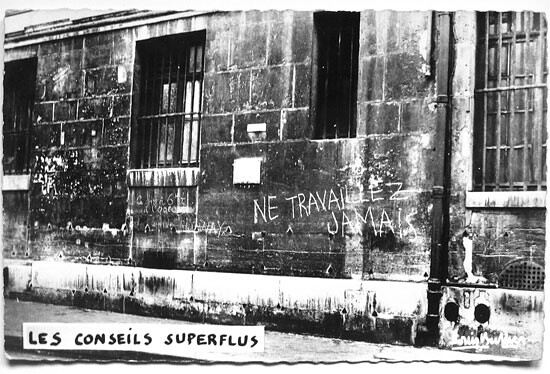

“Ne travaillez jamais” as ephemeral graffito was beyond recuperation, hardly an oeuvre. But as a postcard, subsequently detourned by the S.I., the piece became work, was put to work. Perhaps Debord succeeded in getting the publisher to discontinue the card, but in reprinting the photo (albeit cropped, shorn of its offensive caption) and engaging in a correspondence that has now been published as part of his Correspondence, Debord assisted in its transformation. In reappropiating his un-oeuvre and engaging in this legal game with the publisher, Debord effectively participated in the redefinition of work, performing intellectual or immaterial labor. His act, in other words, did not result in some hypothetical complete break with capitalism, but played the game in such a way that its contradictions were pushed to the limit, to a point where performing the new labor becomes, perhaps, an act—one of the “new forms of action in politics and art” that Debord promised.27
The present situation sees some notable attempts at forging constellations from types of work that would appear to be at opposite ends of the spectrum. The reverse of precarious general performance is bargain-basement invisible labor, done by the indigenous working class but especially by (frequently illegal) migrant workers, who end up as cleaners or domestic workers purely because of their (il)legal status and the invalidity of any foreign diplomas they might have. In 2010–11, a group of Dutch artists and academics called “ASK!” (Actie Schone Kunsten) collaborated with cleaners and domestic workers (often illegal immigrants) on actions that sought to raise their visibility. Is invisible, illegal domestic labor not the dark side of post-Fordist performance? But while many domestic workers have a shaky legal status that creates problems most arty types do not have to contend with, is there not a fundamental commonality in the precarity of these forms of work? As far as cultural internships and jobs are concerned, this precarity is brilliantly exposed and problematized by the Carrotworkers’ Collective/Precarious Workers Brigade. However, the overall system of performing conditions necessitates the forging of connections across class boundaries.
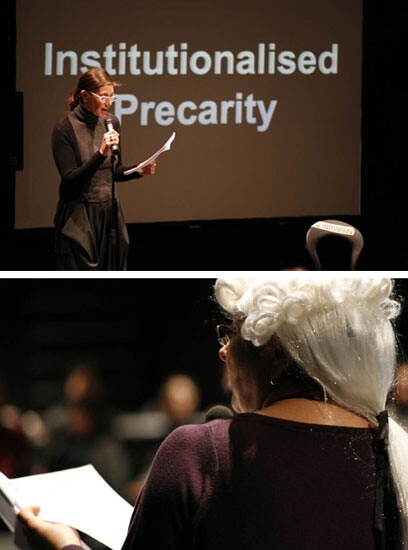

Cleaning and caring would be the most common forms of general performance if they were not forced to be invisible and socially denigrated as rote routine. ASK! tries to make this labor visible through collective actions that effectively turn invisible labor into visible performance. At a moment when the Western and indeed global performative economy is showing serious signs of disintegration, such interventions are part of a mix of practices that turn general performance into a reflexive and interventionist praxis, that turn new labor into a different kind of (non) work. Economic general performance spawns new forms of aesthetic general performance—its mutation, its fulfillment and tipping point.
This winter, depression and exhaustion have stalked the lands like—as Edmund Blackadder might say—two giant stalking things. Perhaps this phenomenon has been especially pronounced in a country such as the Netherlands, where the new forms of action seem desperately marginal, and right-wing populism and market liberalism hold sway. Bodies and psyches rebelled about what was effectively extra work. Managers in the financial sector found themselves throwing up from stress; at the same time, artists and academics turned into zombies that desperately tried to juggle old and new, imposed and voluntary activities. Travaillez toujourswas indeed the motto. If capitalism “is no longer able to semiotize and organize the social potency of cognitive productivity, because value can no longer be defined in terms of average necessary work time,” if performativity can no longer be contained by “actually existing performance,” this excess does not necessarily take on heroic forms. Stomach, brain, and other organs may have their own ways of acting up, of saying “I would prefer not to.”
Nikolaï Taraboukine (Nikolai Tarabukin), Le Dernier tableau (1923), translated from the Russian by Michel Pétris and Andrei B. Nakov (Paris: Champ Libre, 1972), 56.
John Cage, score for 0’00’’ (4’33’’ no. 2), Edition Peters no. 6796 (New York: Henmar Press, 1962).
Ibid. See also Branden W. Joseph, Beyond the Dream Syndicate: Tony Conrad and the Arts After Cage (New York: Zone Books, 2008), 161, 405 (note 21).
For Thierry de Duve’s account of generic art, see Kant After Duchamp (Cambridge, MA and London: MIT Press, 1966).
Huizinga’s study Homo Ludens (first Dutch edition 1938) was an important point of reference for the early Situationist International, although this importance faded in the early 1960s as the Debord-dominated SI became a more explicitly Marxist revolutionary project. For Constant’s New Babylon, Huizinga’s analysis of the importance of “the play-element of culture” remained a cornerstone.
Huizinga’s study Homo Ludens (first Dutch edition 1938) was an important point of reference for the early Situationist International, although this importance faded in the early 1960s as the Debord-dominated SI became a more explicitly Marxist revolutionary project. For Constant’s New Babylon, Huizinga’s analysis of the importance of “the play-element of culture” remained a cornerstone.
Huizinga’s study Homo Ludens (first Dutch edition 1938) was an important point of reference for the early Situationist International, although this importance faded in the early 1960s as the Debord-dominated SI became a more explicitly Marxist revolutionary project. For Constant’s New Babylon, Huizinga’s analysis of the importance of “the play-element of culture” remained a cornerstone.
See Constant, “Het principe van de desoriëntatie,” in New Babylon (The Hague: Haags Gemeentemuseum, 1974), 76-86.
See Constant, “New Babylon,” Provo no. 4 (October 28, 1965): 6,8.
Provo no. 4: 18-19.
An impressive attempt at transcription can be found in the publication Dit hap-hap-happens in Amsterdam (Amsterdam: Arbeiderspers, 1966), unpaginated.
As with Burroughs, addiction and its exorcism play central role in Grootveld’s work (his “new labor”). Tobacco was the big enemy. Recognizing the ritualistic element in smoking, Grootveld turned his happenings into absurdist quasi-rituals to exorcize the demons of control and addiction. Grootveld characterized happenings as “vacuums in time, with as many people as possible in attendance.” In his collective vacuums, young people took to collectively chanting the coughing refrain “uche, uche, uche!”
See Eric Duivenvoorden, Magiër van een nieuwe tijd. Het leven van Robert Jasper Grootveld (Amsterdam and Antwerpen: De Arbeiderspers, 2009), a.o. 147-148, 255.
“Klaas Must Pay Some Day” was a phraseused on several pamphlets and posters, for instance on the poster Beter oorlam dan oorlog, no. BG D68/34 in the Porvo Archive at the International Institute for Social History in Amsterdam.
Ibid, 347-349.
Friedrich Engels, Anti-Dühring (1877), part 3.IV. In an earlier part of Anti-Dühring (3.I), Engels discusses Owen’s Labor Exchange.
For an analysis of the transformation of “time as measure” into “time of life,” see Antonio Negri, “The Constitution of Time” (1981), in Time for Revolution, trans. Matteo Mandarini (New York: Continuum, 2003), 21-138.
See →.
Franco “Bifo” Berardi, Precarious Rhapsody (London: Minor Compositions, 2009), 69-71.
Franco “Bifo” Berardi, “The Future After the End of the Economy,” e-flux journal no.30 (December 2011), see →.
Theodor W. Adorno, Ästhetische Theorie (Frankfurt am Main: Suhrkamp, 1970), 470-471.
These two pamphlets, kept in the Provo Archive at the International Institute for Social History (box 2, folders 3 and 4, pamphlets no. 115 and 116) appear to be part of a game that aimed to have Van Hall put in a personal appearance at the Frascati Theater, where he could cash his check (originally 1000 guilders, then increased to 2000 as an extra incentive).
See Susan Buck-Morss, “Hegel and Haiti” in Critical Inquiry 26, no.4 (Summer, 2000), 821-865.
Migration of Surinamers to Holland had been legally facilitated in 1954 but accelerated in 1970 when Surinam’s economy collapsed, and again around the middle of the decade when Surinam decame independent. In 1974, an ensemble called Henk and his Stainless Steelband had a hit with the song “Wij willen WW,” which depicts Surinamers as being out to profit from Dutch unemployment benefits (a notion that the song ultimately legitimizes as payback for Dutch colonialism.
Hito Steyerl, “Art as Occupation: Claims for an Autonomy of Life,” e-flux journal no.30 (December 2011), see →. A different version of this text, which was delivered at the Autonomy Symposium at the Van Abbemuseum, will be published in Open magazine.
See Guy Debord’s letter to the Cercle de la Librairie (June 27, 1963) in Correspondance volume 2, septembre 1960-décembre 1964 (Paris: Fayard, 2001) 244-247.
“The Situationists and the New Forms of Action in Politics and Art.” See the English translation by Ken Knabb at →.
